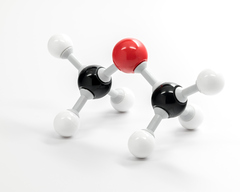Metal-Organic Framework Activation with Dimethyl Ether
TECHNOLOGY NUMBER: 2022-344

OVERVIEW
Activation of metal-organic frameworks (MOFs) through residual solvent displacement by dimethyl ether (DME)- Improves research and industrial applications in MOFs with coordinatively unsaturated metal sites
- DME is an inexpensive solvent that addresses a long term issue of MOF performance and variability
BACKGROUND
Metal-organic frameworks (MOFs) are a class of highly porous materials that consist of metal ions or clusters coordinated with organic ligands. The production of MOFs creates three dimensional structures that are highly porous, exhibit low density, and have a large surface area. Their low density contains a large fraction of void space, within which countless functionalities can be designed based on the desired applications. The ability to customize these factors has let to tens of thousands of MOFs with diverse chemical and physical properties. The characteristics of these structures make them attractive for various applications, including gas storage and separation, catalysis, enzyme immobilization, water capture, drug delivery, and sensing. Still, MOF structures vary greatly and create difficulty producing theoretical predictions of their properties. So, a need exists for an improved method to produce MOFs with predictable and improved methods for activation.
INNOVATION
Researchers have devised a method of MOF activation by the displacement of residual solvent through the use of dimethyl ether (DME). This innovation expands upon the knowledge that ultralow surface tension, low boiling point solvents permit milder MOF activation conditions with coordinatively unsaturated metal centers. This approach addresses a long term issue of MOF performance and variability. In this setting, DME acts as both a solvent and a ligand, allowing for a more efficient and versatile synthesis process. DME is capable of displacing the residual solvents without strongly coordinating to the metal, itself. Moreover, DME improves the crystallinity of MOFs and promote their growth, resulting in larger and more well-defined MOF crystals. This innovation enhances the properties and performance of MOFs in various applications, such as gas storage and separation, catalysis, and sensing. Furthermore, DME is a relatively inexpensive and widely available solvent, making it an attractive alternative to more expensive or toxic solvents commonly used in MOF synthesis. The effectiveness of this system is clear at the bench scale and should not suffer any scale-up issues.